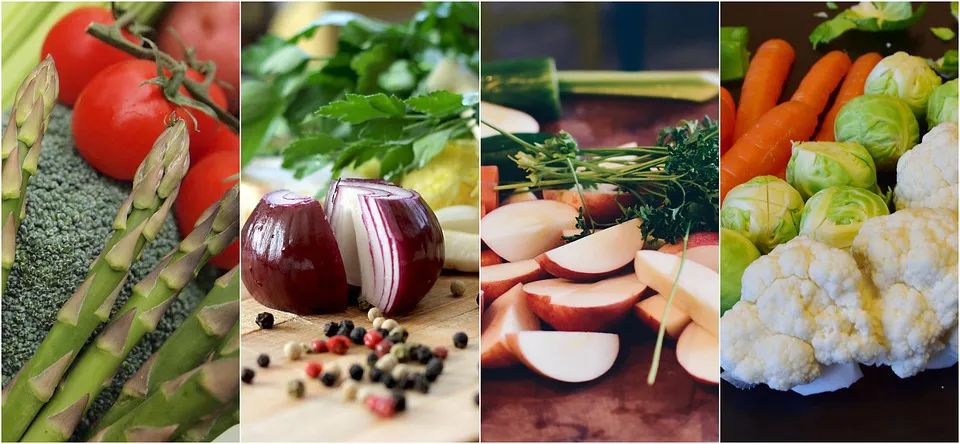
Phlegm-Damp Constitution refers to a condition where the body’s organ functions are disordered, leading to the disruption of the movement of Qi, blood, and body fluids, resulting in the accumulation of dampness and phlegm. This condition is often characterized by obesity, fullness in the abdomen, chest tightness, excessive phlegm, easy fatigue, a heavy sensation in the body, a preference for rich and sweet foods, a large tongue, and a white, greasy tongue coating. It commonly arises from invasion by cold dampness, irregular diet, congenital factors, aging, chronic illness, and lack of exercise. Symptoms may vary depending on the location of phlegm-damp accumulation.Predisposition to diseases: prone to diabetes, stroke, and chest obstruction, with poor adaptability to the plum rain season and damp environments. The main treatment principle is to dry dampness and transform phlegm, while also focusing on improving the phlegm-damp constitution to prevent the occurrence of phlegm-damp diseases.
According to TCM, there are nine basic constitutions: harmonious constitution, Qi deficiency constitution, Yang deficiency constitution, Yin deficiency constitution, phlegm-damp constitution, damp-heat constitution, blood stasis constitution, Qi stagnation constitution, and special constitution. The relatively healthy harmonious constitution accounts for only 32.75% of the population, while the other eight imbalanced constitutions account for 67.25%.Overall physical characteristics: The main features of phlegm-damp constitution include obesity, fullness in the abdomen, and a greasy tongue coating.Physical characteristics: Obesity with a soft and full abdomen.Common manifestations: Oily skin on the face, excessive sweating, chest tightness, excessive phlegm, a greasy or sweet mouth, a preference for rich and sweet foods, a greasy tongue coating, and a slippery pulse.Psychological characteristics: Generally mild and stable personality, often patient.Predisposition to diseases: Prone to diabetes, stroke, and chest obstruction.Adaptability to external environments: Poor adaptability to the plum rain season and damp environments.Daily symptom manifestations:1. Body shape and complexion: Obesity with a soft abdomen, swollen limbs that leave indentations when pressed, a mild personality, oily skin, pale yellow complexion, slightly swollen eyelids, easy fatigue, pale lips, and a lack of luster.2. Tongue: Enlarged tongue with a slippery and greasy coating, often with teeth marks on the sides.3. Mouth, hands, and feet: Greasy mouth, pale lips, rarely feeling thirsty, disinclined to drink water, prone to sweating, with cool skin after sweating, heavy sensation in the head and body, joint pain, numbness of the skin, and frequent tinnitus, especially in those over 60 years old.4. Sensations and sleep: Tendency to feel fatigued, cold hands and feet, chest tightness, excessive phlegm, easy fatigue, joint soreness, skin numbness, and gastrointestinal discomfort.5. Pulse: Slippery pulse.6. Preferences: Lazy, prone to sleepiness, feeling heavy, preferring rich and sweet foods, feeling better in summer and worse in winter.7. Bowel and bladder: Frequent, loose stools, especially urgent in the morning, with rapid bowel movements, and frequent urination at night with clear, watery urine.Daily lifestyle adjustments:The phlegm-damp constitution is primarily characterized by obesity, chest tightness, excessive phlegm, easy fatigue, and a heavy sensation in the body. Additionally, phlegm-damp retention in different areas can manifest various symptoms, such as recurrent cough and thick phlegm in those with lung phlegm-damp, or nausea, vomiting, abdominal distension, and poor appetite in those with middle-jiao obstruction.1. Herbal regulation: The formation of phlegm-damp is closely related to the lungs, spleen, and kidneys. The focus of treatment is to tonify these three organs. Patients with lung deficiency and fluid accumulation leading to phlegm can take Er Chen Tang (Two-Cured Decoction); those with spleen deficiency leading to damp accumulation can take Liujunzi Tang (Six Gentlemen Decoction) or Xiangsha Liujunzi Tang (Aromatic-Invigorating Six Gentlemen Decoction); and patients with kidney deficiency and water-damp leading to phlegm can take Jinkui Shenqi Wan (Kidney Qi Pill).2. Acupuncture regulation: According to TCM theory, patients with phlegm-damp constitution generally exhibit types such as spleen deficiency with damp obstruction, stomach heat with damp obstruction, liver qi stagnation, and dual deficiency of spleen and kidney. Treatment can be administered through electroacupuncture, guasha, or auricular acupressure.3. Dietary regulation: Patients should avoid rich and heavy foods, limit alcohol consumption, and avoid overeating. They should consume more vegetables and fruits, and regularly eat foods that strengthen the spleen and resolve dampness, such as white radish, water chestnut, seaweed, jellyfish, onions, loquats, ginkgo nuts, jujubes, lentils, coix seeds, and red beans.4. Exercise: Individuals with phlegm-damp constitution are usually overweight and prone to fatigue, so they should engage in regular physical exercise, such as walking, jogging, ball games, or martial arts. The intensity of exercise can gradually increase, as exercise helps to strengthen the body.

Autumn dietary adjustments: Individuals with phlegm-damp constitution are often overweight, primarily due to poor dietary habits. Reasonable dietary adjustments can help, especially in the cooler autumn weather, where it is important to control food intake while also replenishing the body’s energy needs.Red Bean Carp SoupIngredients: 1 live carp (about 800g), 50g red beans, 10g dried tangerine peel, 6g chili, 6g grass fruit, cooking wine, ginger, scallions, pepper, and a little salt.Method: Scale, gut, and clean the carp; stuff the red beans, dried tangerine peel, chili, and grass fruit into the fish’s belly, place in a bowl, add cooking wine, ginger, scallions, pepper, and a little salt, then steam until cooked.Effect: This dish strengthens the spleen, eliminates dampness, and transforms phlegm, suitable for those with phlegm-damp constitution presenting fatigue, poor appetite, abdominal distension, and chest tightness.Pearl Coix BallsIngredients: 200g lean pork, 150g coix seeds, 30g ginger, and appropriate amounts of salt, monosodium glutamate, egg white, starch, sugar, and vegetable oil.Method: Clean the pork and chop it into minced meat, form into 2cm diameter meatballs; finely chop the ginger. Wash the coix seeds, coat the meatballs with coix seeds and ginger, steam for 10-15 minutes, then remove and season before serving.Effect: Strengthens the spleen, transforms dampness, and regulates the stomach, aiding in weight loss.Astragalus Yam Coix PorridgeIngredients: 20g each of astragalus, yam, ophiopogon, coix seeds, and bamboo shavings, appropriate sugar, and 50g glutinous rice.Method: Soak the yam slices with astragalus, ophiopogon, and white atractylodes, then add all ingredients, boil with water, and simmer to make porridge.Effect: Tonifies Qi, nourishes Yin, strengthens the spleen, transforms phlegm, and calms the heart.Carrot Coriander SoupIngredients: 250g carrots, 150g coriander, 100g water chestnuts, and 150g snow pears.Method: Peel and slice the carrots, water chestnuts, and snow pears. Remove the roots and leaves from the coriander, wash, and cut into 5cm sections. First, boil the carrots, water chestnuts, and snow pears in a pot, then add coriander and simmer for 10 minutes before serving. Consume twice daily for 5 days.Effect: Carrots are sweet and neutral, helping to relieve chest tightness, nourish the middle, and calm the five organs, treating constipation, gastrointestinal discomfort, fullness, and indigestion.Chrysanthemum Coix PorridgeIngredients: 9g loquat leaves, 6g chrysanthemum, 30g coix seeds, and 50g rice.Method: Boil the first two ingredients in 3 bowls of water until reduced to 2 bowls, strain to obtain the liquid, then add coix seeds, rice, and appropriate water to cook into porridge.Effect: Clears heat, detoxifies, transforms phlegm, stops cough, and eliminates dampness.White Atractylodes Tangerine Peel TeaIngredients: 30g white atractylodes, 10g dried tangerine peel, and 1000ml water.Method: Simmer over medium heat for half an hour, strain, and drink as tea.Effect: Strengthens the spleen, dries dampness, and nourishes the stomach while eliminating phlegm.White Atractylodes Tangerine Peel Pork Stomach SoupIngredients: 6g dried tangerine peel, 30g white atractylodes, half to one fresh pig stomach, 6g sand ginger, and 5 slices of ginger.Method: Clean the pig stomach and blanch it, then place all ingredients in a soup pot, add about 2500ml of water, bring to a boil, then simmer on low heat for about 1.5 hours. Remove the pig stomach, cut into pieces, return to the pot, and simmer for another 30 minutes, then season to taste.Effect: Strengthens the spleen, dries dampness, and stimulates appetite. White atractylodes tonifies Qi and strengthens the spleen, dries dampness, and promotes urination; dried tangerine peel regulates Qi and harmonizes the middle, dries dampness, and transforms phlegm; pig stomach is sweet and warm, tonifying deficiency and strengthening the spleen and stomach. Therefore, this soup is beneficial for strengthening the spleen and stimulating appetite, especially for those with abdominal distension, poor appetite, and indigestion. Follow “Little Bian Que” to learn more about TCM knowledge.
Follow “Little Bian Que” to learn more about TCM knowledge.

